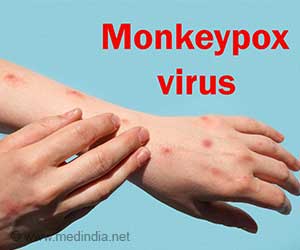Children who carry malaria parasite, Plasmodium emit a specific smell from their skin that attracts mosquitoes to bite through skin and further infect bloodstreams increasing malaria spread.

‘Children with malaria emit specific odors that attract mosquito bites. Identifying volatile human-derived compounds causing the smell could help develop these compounds as biomarkers of malaria and improve chemical lures to trap mosquitoes.’





It's a vicious circle but one that has enabled a multinational team of researchers to identify the odors as organic hydrocarbons in the form of three aldehydes, heptanal, octanal and nonanal, whose discovery could bring relief to a disease that claimed nearly half a million lives in 2016."These are fairly common smells, which are described as fruity or grassy," says Jetske de Boer, a researcher in entomology and chemical ecology at Wageningen University & Research in The Netherlands. "Now that we have identified and quantified the aldehydes associated with malaria infection, we understand more of the parasite's infection route."
The team is led by Wageningen and the London School of Hygiene and Tropical Medicine, with support from key stakeholders including Rothamsted Research, for its expertise in data analysis and the chemical ecology of insects. The team's findings are published in PNAS. "Our work provides evidence that human hosts become more attractive to malarial mosquitoes during infection," says Mike Birkett, a chemical ecologist in the Department of Biointeractions and Crop Protection at Rothamsted.
He adds: "Identification of the volatile human-derived compounds that cause this phenomenon provides opportunities to develop these compounds as biomarkers of malaria and as components of chemical lures to trap mosquitoes".
Malaria occurs mainly in tropical regions and its incidence started to rise in 2016, after falling since 2010, records WHO's World Malaria Report 2017. In 2016, 91 countries reported 216 million cases, and 445, 000 deaths; 15 countries account for 80% of the figures, and all but one is in sub-Saharan Africa.
Advertisement
"The specific smell is the odor plume of volatiles emitted from skin, think sweat," says John Caulfield, an analytical chemist at Rothamsted, who used gas chromatography and mass spectrometry to identify the active compounds. "Only a handful are of interest to mosquitoes." Confirmation of the chemistry results came through statistical analysis of the data from the experiments, which comprised "linear mixed modelling of quantified volatile compounds and generalised linear modelling of counts of mosquitoes," says Stephen Powers, a data analyst at Rothamsted. This statistical analysis, he notes, "revealed how confident we can be that certain compounds were indeed produced in greater amounts by infected individuals and that mosquitoes had enhanced attraction to these chemicals."
Advertisement









